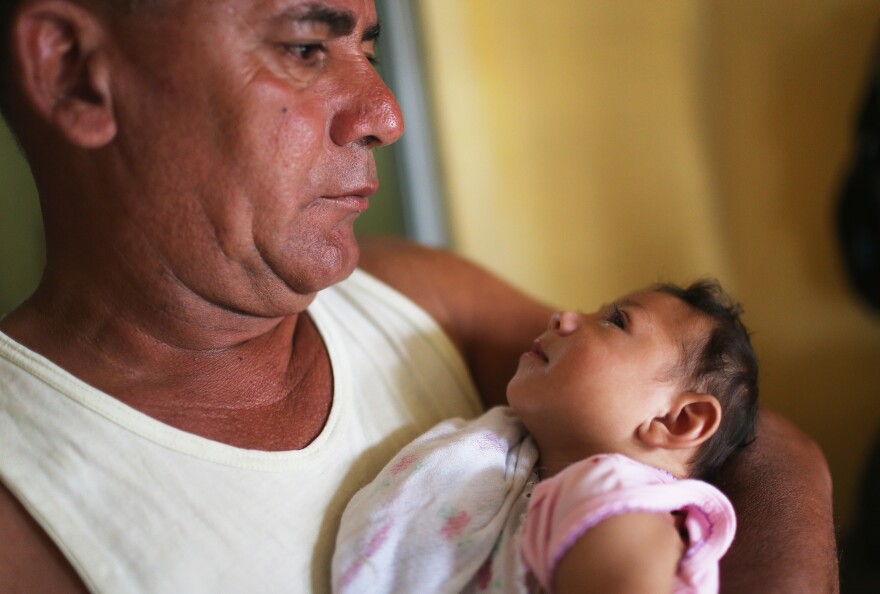A few weeks ago, Dr. James Bale saw a series of MRI images in a medical journal of MRI scans of babies infected with Zika in the womb.
They scans showed something Bale had seen only a few times in his 30-year career: a phenomenon called fetal brain disruption sequence.
As the fetus's brain starts to grow, it creates pressure, which pushes on the skull and causes it to grow. But if something stops brain growth — such as a virus — pressure on the skull drops. And the skull can collapse down onto the brain.
The skin around the head continues to grow, Bale says. So the baby is born with wrinkles of skin at the back of the neck and a tiny skull. In some cases, the baby's head is as small as an orange, or about half the size of a healthy baby's head.
"It's quite remarkable what the Zika virus is doing to the brain of young infants," Bale says. "Many of them will die often in infancy, and the majority, if not all, will then have a long-term, severe developmental problems."
Now scientists think they have an understanding about how Zika causes these severe brain malformations. The findings come from a series of mouse experiments, published Wednesday in three leading journals.
In one study, published in Nature, Alysson Muotri and his team at the University of California, San Diego, infected pregnant mice with Zika and looked to see how the virus harmed the baby mice.
"We detected the virus all over the mice and in different regions of the body," Muotri says.
But for some reason — and scientists don't know why yet — Zika is particularly attracted to brain cells. And once inside the cells, Muotri says, Zika turns them into viral factories that start producing huge amounts of virus. Until they burst.
"They explode, and more viral particles are released that can infect other cells. And they can just amplify themselves," Muotri says.
More and more brain cells get infected. More die. This cell death is already a problem for the fetus. It scars the brain and creates inflammation.
But the situation gets worse because the brain cells infected by Zika are extremely special. They're called neural progenitor cells. And they're responsible for building a large portion of the brain.
"These are fast-replicating cells that will give rise to billions of cells in our brains," Muotri says.
So if a fetus loses even just a small percentage of these cells, a portion of its brain will never develop. "And the impact later in life would be dramatic," he says.
A second study, published in the journal Cell Stem Cell, confirmed that Zika destroys neural progenitor cells inside a growing embryo. In that experiment, a team of scientists at the Chinese Academy of Sciences, injected the virus directly into the brains of mice embryos, developing inside their moms.
Muortri says death of brain cells is likely the major way that Zika causes microcephaly in babies. But it isn't the full picture.
In the third study, Indira Mysorekar and her colleagues at Washington University in St. Louis, also infected pregnant mice with Zika.
They found the virus not only damages the brain but also attacks the placenta.
"The nutrient and blood exchange that normally happens between the mother and the fetus is reduced," Mysorekar says. This slows down the baby's growth — and may hurt the brain as well.
Mysorekar and her colleagues published their findings in the journal Cell.
She says mouse experiments can never tell us exactly what's happening in people. Human anatomy is more complicated.
But one thing is clear: Once Zika infects the fetus, "it leaves a lot of havoc and devastation in its wake," she says. "It's almost like a tornado or an earthquake. There is death following Zika."
Copyright 2021 NPR. To see more, visit https://www.npr.org.






